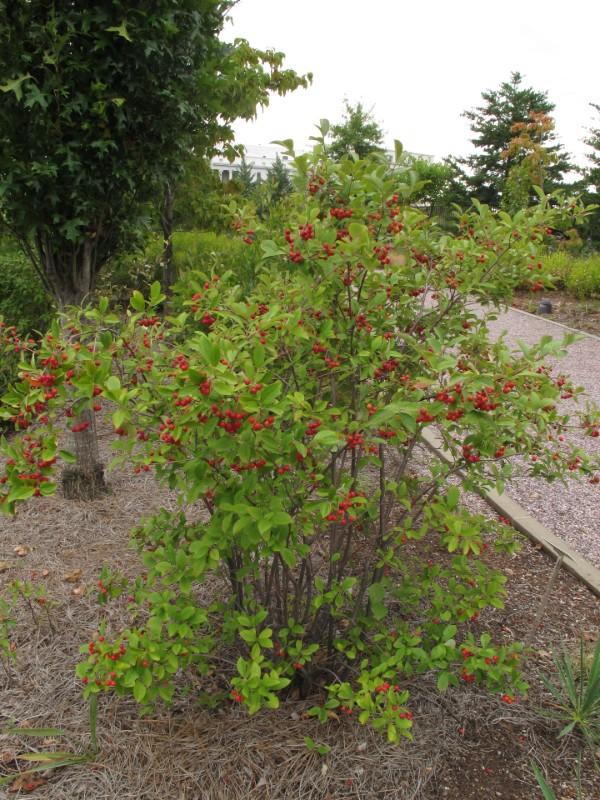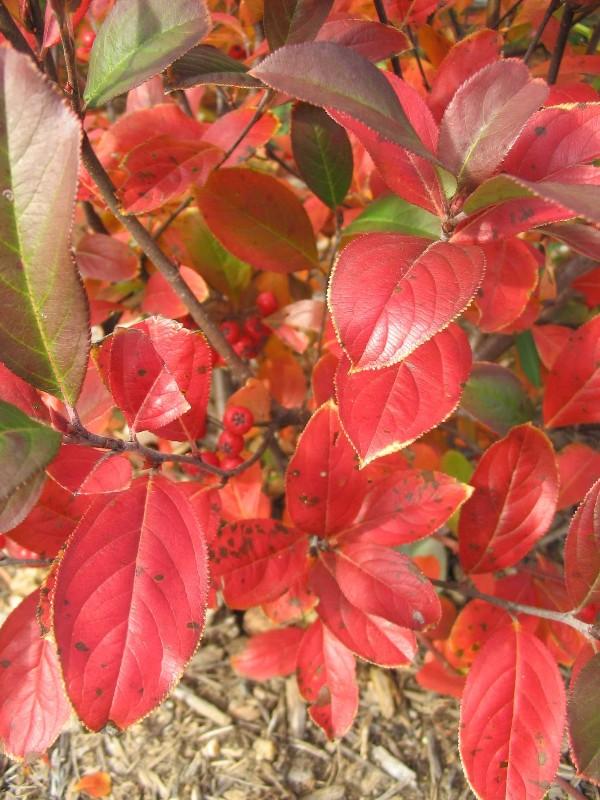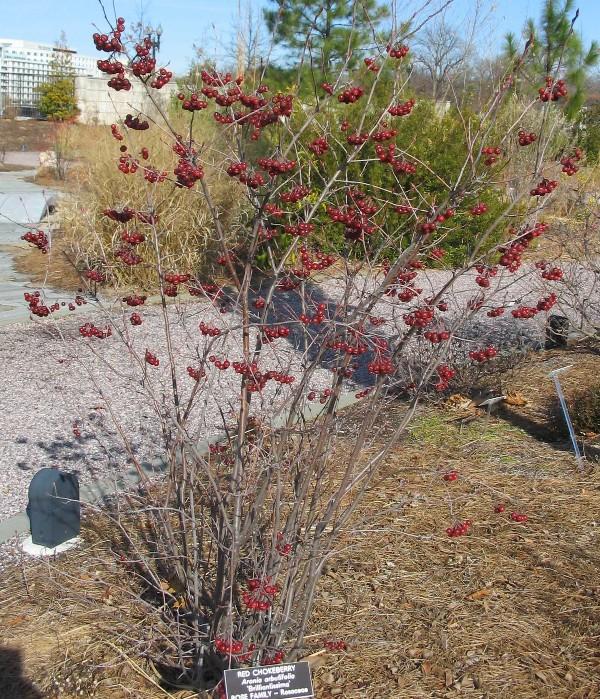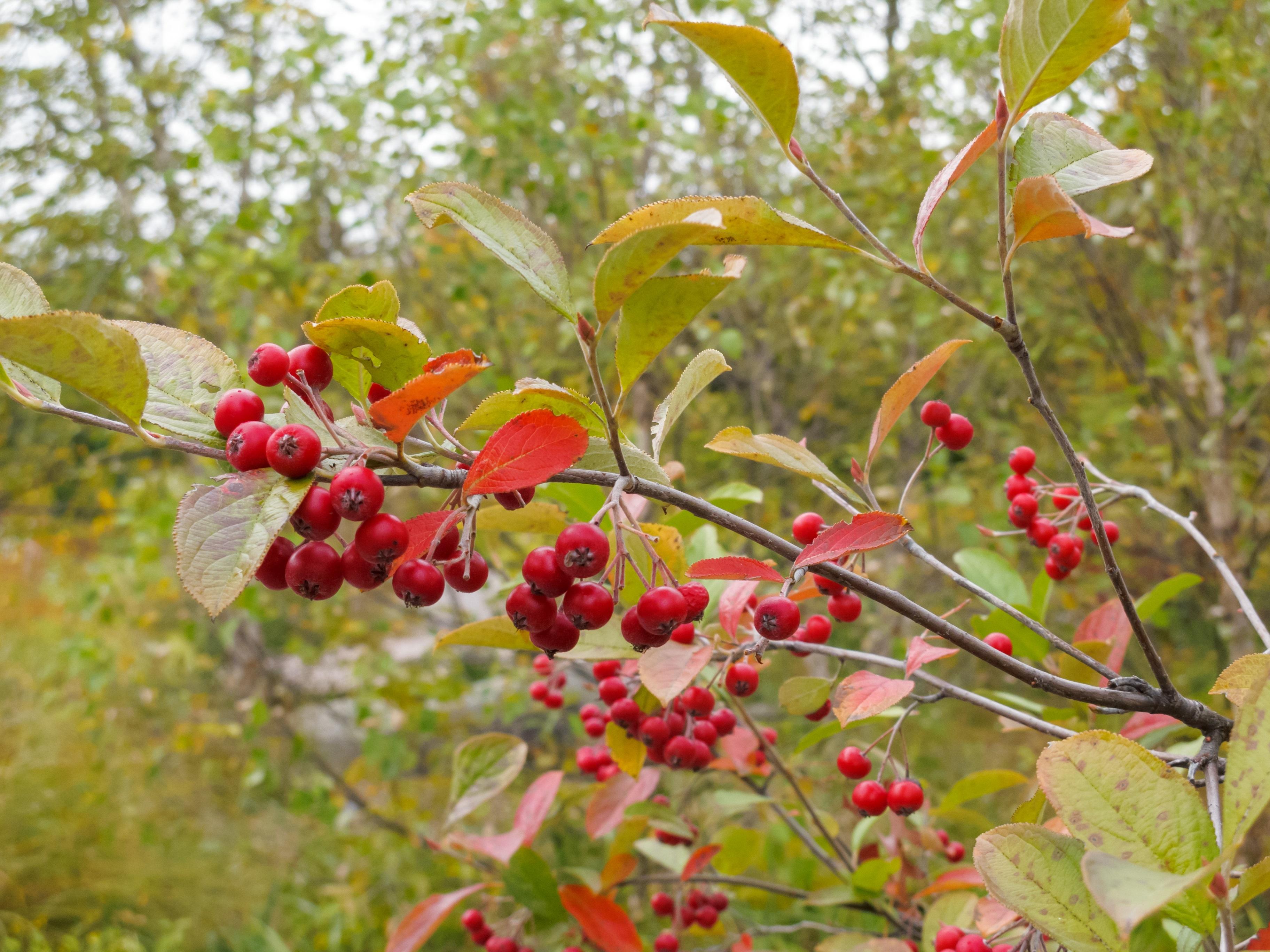About red chokeberry
Aronia arbutifolia
(Formerly Photinia pyrifolia)
Deciduous shrub
Rose Family
Maryland Distribution: Mountain, Piedmont, Coastal Plain
Height: 1.5-13 feet
Flowers: white; March-May
Fall color: orange-red
Sun: Full sun to partial shade
Soil: any soil texture including clay; dry, moist, wet; acidic, pH <6.8
Garden Uses: This shrub offers multiple seasons of interest - white flowers in the spring, brilliant orange-red color in autumn, and berries in the fall and winter. It is native to eastern North America where it is typically found in swaps, bogs, or dry woodland thickets. It tolerates urban conditions, compacted soil, and salt spray. It is drought-tolerant once established.
Use this shrub for a hedge, screening, forest edges, bird gardens, erosion control on slopes, pond or stream edges, or a rain garden. It spreads by suckering (sending up new shoots near the base). Prune out one-third of the oldest stems each year to maintain the plant's vigor.
Wildlife: The berries provide food for a variety of birds such as Mockingbirds and Thrashers, Cedar Waxwings, Bluejays, Vireos, and Sparrows. Butterflies and other pollinators feed on the flower nectar. Sometimes browsed by deer.



Still have a question? Contact us at Ask Extension.
